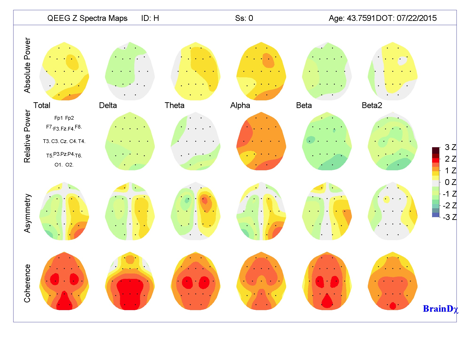Harnessing the Potential of Biometric Feedback to Revolutionize Chronic Discomfort Control and Enhance Standard of Living
Harnessing the Potential of Biometric Feedback to Revolutionize Chronic Discomfort Control and Enhance Standard of Living
Blog Article
Persistent pain is a condition that impacts countless of people across the globe. It can be caused by multiple elements, including injuries, diseases, or even anxiety. For many individuals, controlling chronic pain can be a daily challenge that affects their quality of life. Traditional treatments often include drugs, physical therapy, and sometimes surgery. However, these approaches do not always provide the alleviation that patients seek. Lately, biofeedback has emerged as a promising option for managing chronic pain and enhancing overall well-being.
Biofeedback is a method that teaches patients how to manage certain bodily processes by using indicators from their own bodies. This approach includes using sensors that track physiological responses such as heart rate, muscle tension, and skin temperature. By providing immediate feedback, individuals can learn to recognize their body's responses to pain and stress. This awareness allows them to formulate strategies to manage their pain more efficiently. For example, if a patient notices that their muscle tension rises when they are in pain, they can practice relaxation strategies to help reduce that tension.
One of the key advantages of biofeedback is that it enables individuals to take an proactive role in their pain control. Instead of depending solely on drugs or treatments from medical providers, patients can gain to comprehend and regulate their own physiology. This feeling of control can lead to enhanced confidence and a more optimistic outlook on life. Many individuals indicate feeling more in control of their pain and less like sufferers of their syndrome. This change in perspective can substantially improve their standard of life.
Studies has demonstrated that biofeedback can be beneficial in alleviating chronic pain indicators. Research suggest that individuals who employ biofeedback methods often undergo less pain and better physical ability. Additionally, biofeedback can help lessen anxiety and stress, which are frequent concerns for those living with chronic pain. By addressing both the physical and emotional aspects of pain, biofeedback offers a holistic approach to pain management. This comprehensive method can lead to better outcomes for individuals, allowing them to participate more completely in their daily activities.
In summary, biofeedback is a significant tool for revolutionizing chronic pain control. By educating patients to comprehend and regulate their physiological reactions, biofeedback empowers patients to take charge of their pain. This approach not only helps reduce pain but also enhances overall standard of life. As more individuals look for options to conventional pain control methods, biofeedback stands out as a promising option. With continued investigation and recognition, biofeedback could turn into an integral part of chronic pain treatment, web helping individuals lead healthier, more fulfilling lives.